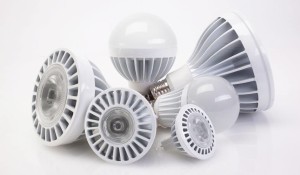 The last several years have seen a significant decrease on the cost of LED bulbs, and the dramatic price change has made installation in businesses across [city] a reality in many cases. According to a study from The U.S. Energy Information Administration, the technology has seen the reverse trend as far as quality is concerned. While the fixtures and bulbs are getting less expensive to purchase, their efficiency and lifecycle continue to grow. LED options, in general, last longer now than they ever have before, and they are less expensive to run throughout [city]
The last several years have seen a significant decrease on the cost of LED bulbs, and the dramatic price change has made installation in businesses across [city] a reality in many cases. According to a study from The U.S. Energy Information Administration, the technology has seen the reverse trend as far as quality is concerned. While the fixtures and bulbs are getting less expensive to purchase, their efficiency and lifecycle continue to grow. LED options, in general, last longer now than they ever have before, and they are less expensive to run throughout [city]
Brights Lights Than Expected
According to USEIA, the bulbs now surpass original expectations, and they continue to reinforce the idea that inefficient incandescents are the way of the past. LED bulbs consistently achieve brightnesses of over 100 lumens per watt, whereas incandescents approach 18 lumens per watt at very most. Some are as low as 13. [city] business owners are no longer sacrificing brightness in order to achieve cost savings, and they are not spending that much more over traditional alternatives to get them installed.
The Growth Continues
The market is responding even if LEDs have yet to come close to a majority of the marketshare. They still have a much smaller share of the lighting market than the alternatives that shoppers are used to, but it’s still growing exponentially. Whereas CFL bulbs have maintained consistent sales since 2011, LEDs have more than quintupled the number of bulbs shipped throughout the country. In 2011, 9 million bulbs were shipped from manufacturers. In 2013, the number reached 45 million, according to USEIA.
Cut Your Out-Of-Pocket
In part, the draw to LEDs can be further explained by the number of financial incentives that are offered– beyond just the long-term savings. Many cities and states offer rebates for switching to energy efficient alternatives, and this can make the out-of-pocket for the bulbs and fixtures in [city] businesses negligible at best. Stores, manufacturers and local agencies are also offering rebates that make the technology more accessible for those who are short on up-front liquidity.
Longer Life, Lower Power
It has been fairly common knowledge that LEDs are the more efficient option, but since 2012, they have actually become substantially more efficient then older versions of the same technology. The lifecycle of the bulbs and the energy needed to run them have shown drastic improvements in just over two years as the pressure to create the best and most efficient option continues to build. Businesses throughout [city] can enjoy the long-term staying power of the bulbs that are rated for up to 100,000 hours worth of use, and this increase in efficiency far outlasts even some of the LED bulbs that were put on the market just two years ago. They use about 75 percent of the power of traditional alternatives, and the bulbs can reduce the cost of the lighting portion of a [city] energy bill by nearly 40 perfect over older alternatives.
LEDs Are Better Than Before
Not only are [city] businesses saving money by switching to LED bulbs, but they are also saving more than previously expected by using today’s incarnations of the technology. The life cycle is longer, the energy efficiency is better, the cost is lower and the brightness is equal to older, less efficient alternatives. In just a few years, LED bulb manufacturers and agency rebates have made it possible to transition without the financial strain that may have been experienced before.

![How to Choose an LED Light Bulb for Your [city] Home [city]](https://8blocks.s3.amazonaws.com/eepros/blog-images/2016/02/interior-design-413718_640-300x200.jpg)
![How Much Can You Save When Using LED Light Bulbs? [city]](https://8blocks.s3.amazonaws.com/eepros/blog-images/2016/01/coins-912719_640-300x199.jpg)
![4 Ways to Make Your [city] Home More Relaxing With LED Lighting [city]](https://eepros.com/wp-content/uploads/2017/02/hotel-1330841_640-300x200.jpg)
![3 Pointers for Buying LED Light Bulbs [city]](https://8blocks.s3.amazonaws.com/eepros/blog-images/2016/01/office-923169_640-300x199.jpg)